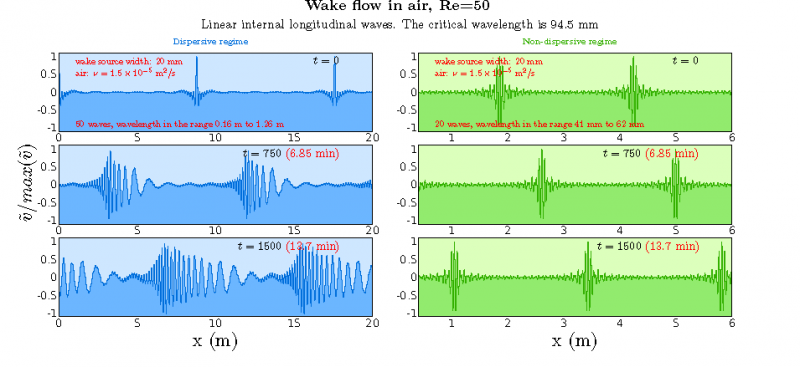The first detection of gravitational waves, which took place a few weeks ago, has brought attention to a physical phenomenon that had long been theorized: waves carry information and can signal extraordinary (or extreme) events that occurred far away in space and time, as in this case.
A study by Daniela Tordella, from the Department of Mechanical and Aerospace Engineering of the Politenico di Torino sheds some light on the propagation of another kind of wave—those of fluids in motion. Research of the Politecnico, carried out through over 130,000 numerical simulations, shows that groups of small-amplitude waves that propagate inside fluids in motion have different modes of propagation depending on their wavelength; the study, which will be published in Physical Review E, addresses "dispersive" or "non-dispersive" regimes.
The difference between the two systems is characterized by the observed behavior of waves. Imagine throwing a stone into a lake. Surface waves are observed, visually analogous to the behavior of the internal waves that are generated in the same lake. As long as the wavelength (i.e. the distance between two ridges) is below a certain threshold, a wave packet remains compact and all waves propagate at the same speed. By contrast, when the wavelength is above the threshold, which depends on the ratio between the kinetic energy (mechanic) and the internal energy of the system, a group of waves with similar length spread and the single waves propagate with different speeds with respect to the initial group. In particular, they propagate slower than the group if the flow is confined by walls, faster if the flow is unbounded. This is an example of "dispersive" waves.
Examples of non-dispersive waves include the propagation of light in vacuum or sound waves in air. In this case, any waveform propagates without changing its shape.
This phenomenon, now shown theoretically, could have potential applications in various fields including hydraulic micro-system design, optical fibres, encryption, and the study of such large-scale systems dynamics as atmospheric and oceanic flows, with potential effects on weather forecasting or climate models.
More information: Francesca De Santi et al. Dispersive-to-nondispersive transition and phase-velocity transient for linear waves in plane wake and channel flows, Physical Review E (2016). DOI: 10.1103/PhysRevE.93.033116
Journal information: Physical Review E
Provided by Politecnico di Torino





















